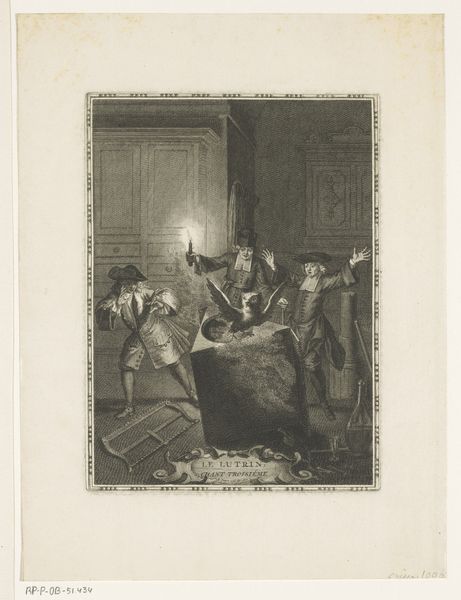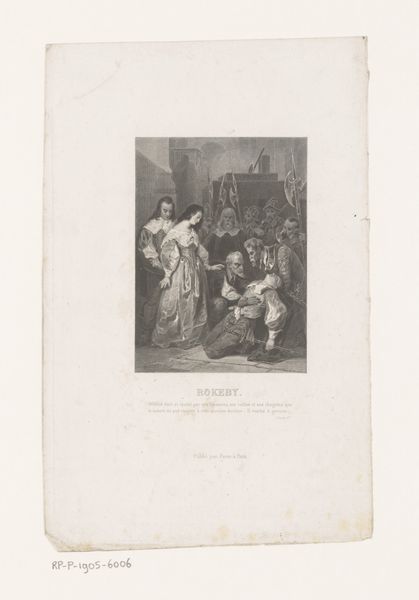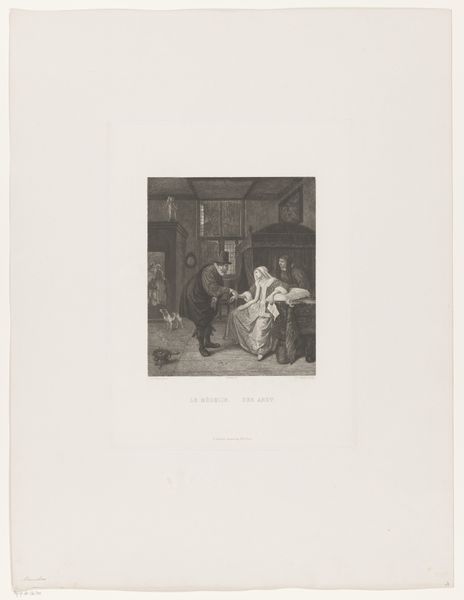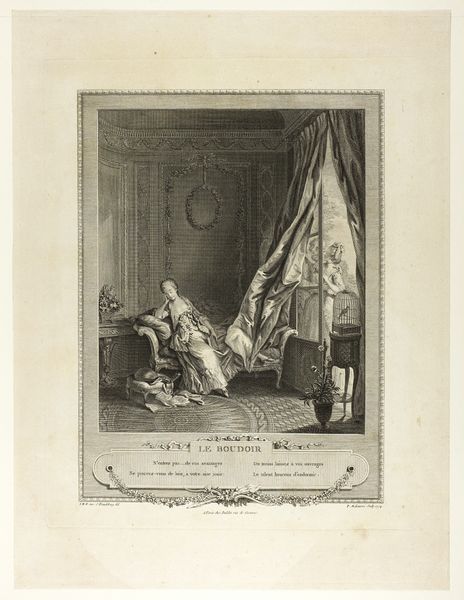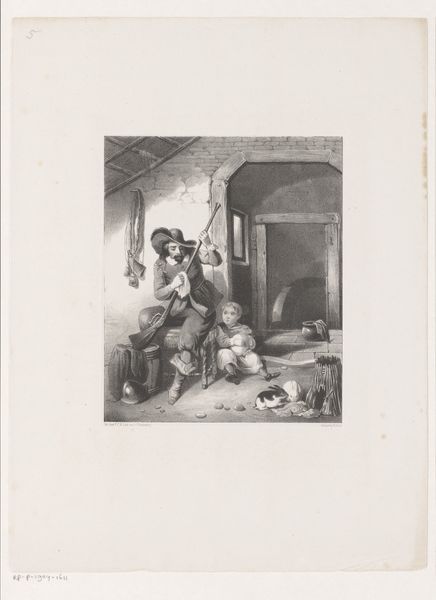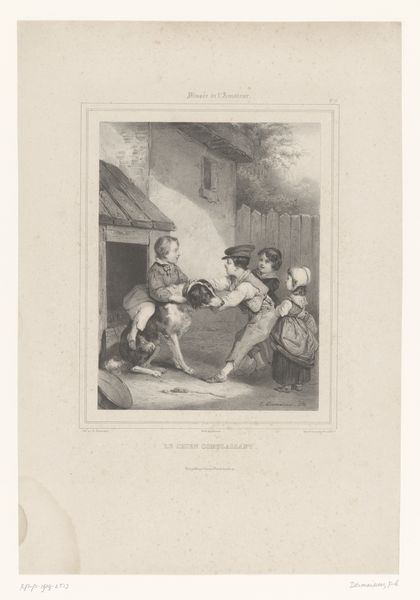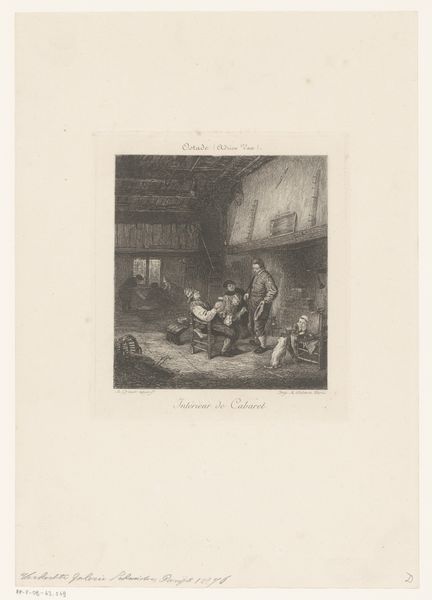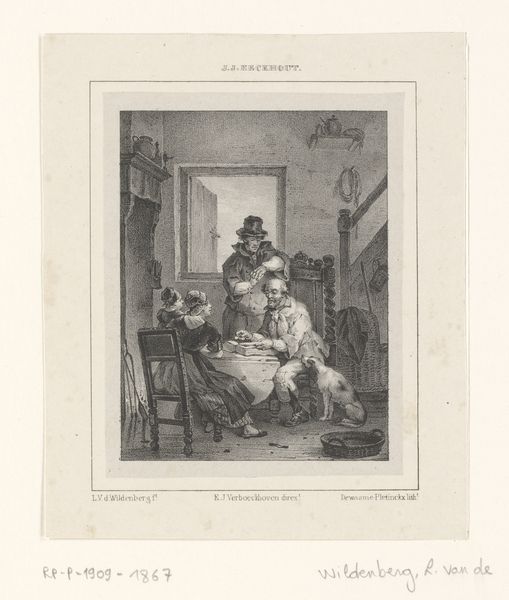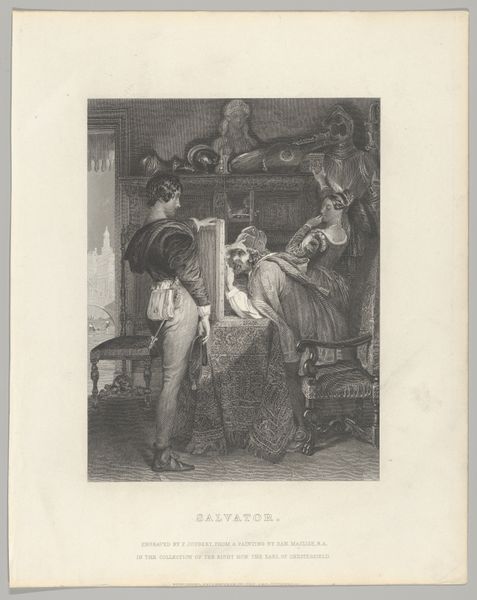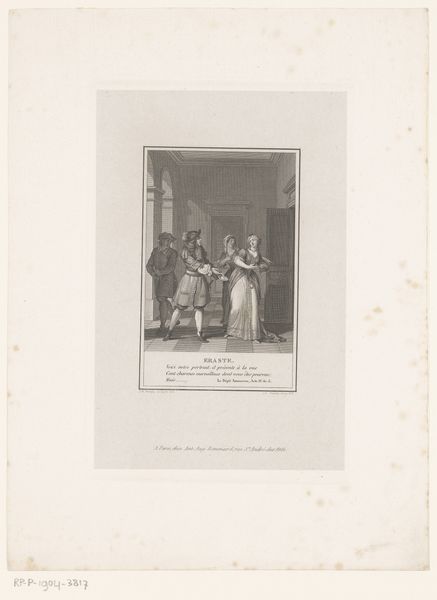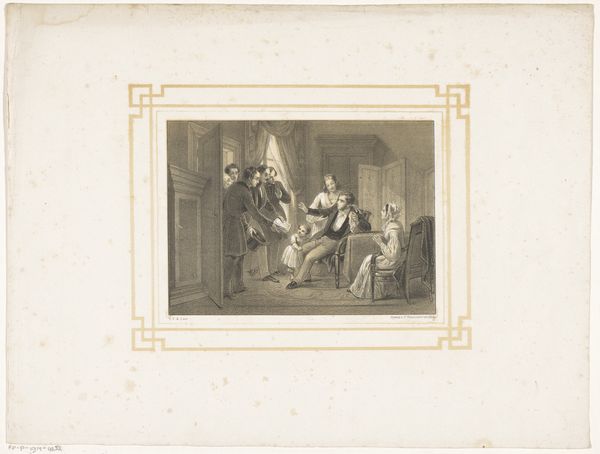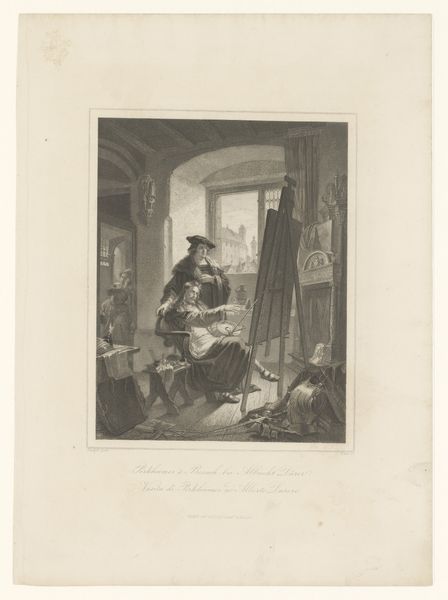
Dimensions: height 592 mm, width 440 mm
Copyright: Rijks Museum: Open Domain
This is Carl Straub's depiction of "The Man in the Iron Mask," crafted in ink. The seated figure, slumped with a mandolin at his side, is an icon of captivity, both physical and psychological. Consider the mask, a symbol recurring throughout history. It appears in ancient Greek tragedies, concealing identity while amplifying emotional resonance. Likewise, medieval carnival masks blurred social boundaries, allowing temporary liberation. Here, the iron mask evokes not freedom but imprisonment. The gesture of the figure leaning heavily on the table, burdened by unseen weight, echoes the "melancholic" pose found in classical art. This posture transcends time, recurring in various guises—from depictions of mourning figures in antiquity to modern expressions of despair. This consistent reappearance suggests a collective memory of suffering. The image taps into our own subconscious anxieties, reminding us of the ever-present human conditions of confinement and isolation. This image is not merely a historical record; it's a mirror reflecting our shared human experience.
Comments
No comments
Be the first to comment and join the conversation on the ultimate creative platform.
